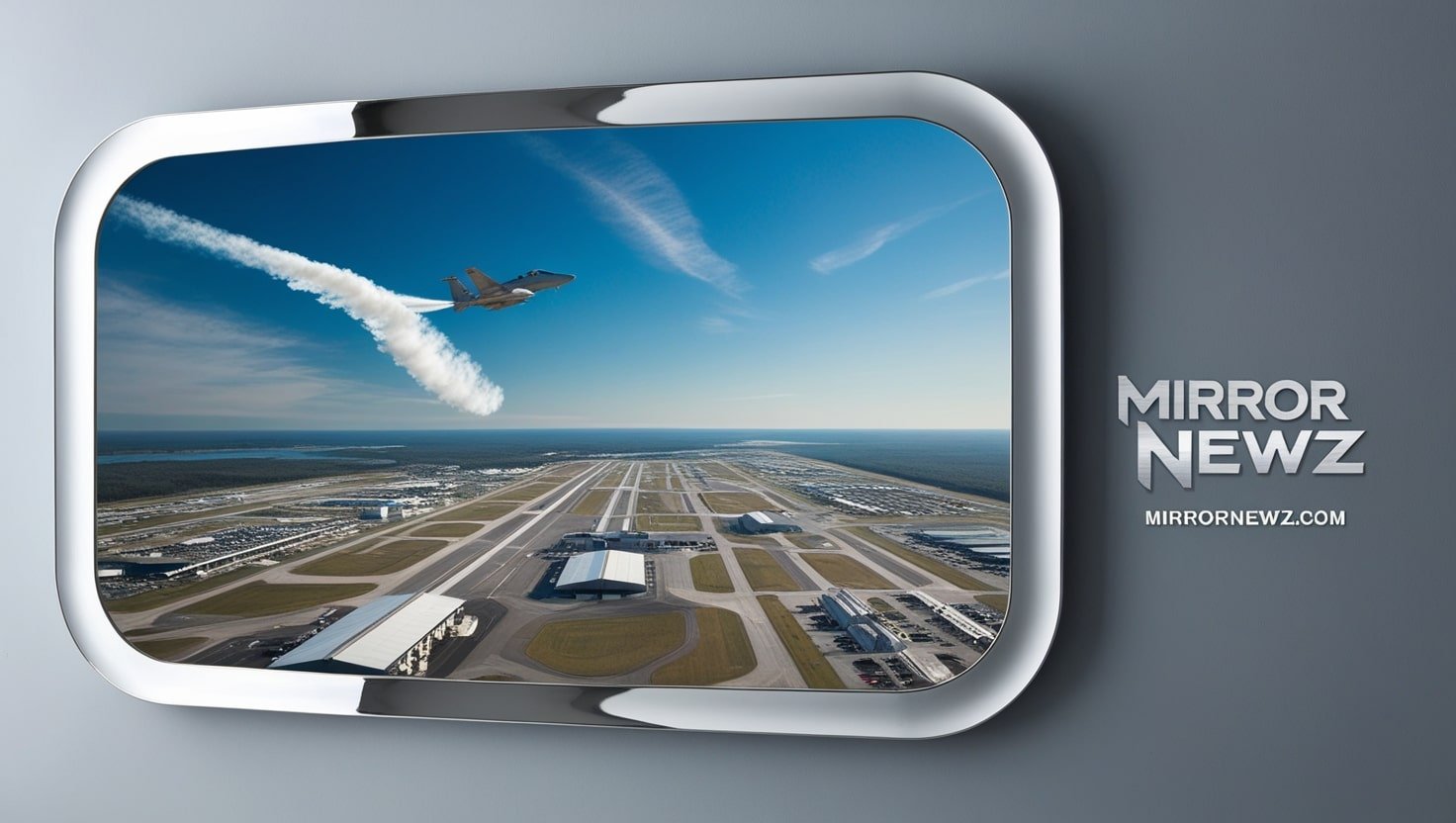Pensacola, Florida, is not only famous for its beautiful beaches and rich naval history, but it also plays a key role in aviation training. For both new pilots and seasoned instructors, the Pensacola KML file flight training areas serve as an essential tool in navigating the designated zones for flight practice. By using this tool, pilots can ensure they stay within safe, approved spaces while performing maneuvers and exercises.
In this article, we will explore everything you need to know about the Pensacola KML file flight training areas, how they function, why they are important, and how they contribute to flight safety. Whether you’re a flight student preparing for your first solo flight or an experienced pilot, understanding the importance of the Pensacola KML file flight training areas will enhance your training experience and ensure you remain within the proper airspace.
What Is the Pensacola KML File Flight Training Areas?
The Pensacola KML file flight training areas is a digital map used by pilots and flight schools in the Pensacola region to define specific airspace boundaries. The KML file is based on Keyhole Markup Language, a file format used to display geographic data. These files can be opened in applications such as Google Earth, which allow users to view the training zones in detail.
Each Pensacola KML file flight training area is carefully outlined with specific coordinates and boundaries, making it easy for pilots to identify the zones within which they can practice. The use of this file helps ensure that student pilots are training within a safe and controlled environment, free from interference with commercial and military air traffic. By following the boundaries set forth in the Pensacola KML file flight training areas, pilots can effectively manage their flight planning, ensuring they stay within designated training zones.
Why the Pensacola KML File Flight Training Areas Are Essential
The Pensacola KML file flight training areas are crucial for several reasons, the most important of which is safety. Pilots, especially students, need clear guidance on where they can conduct maneuvers without accidentally entering restricted or busy airspace. This is where the Pensacola KML file flight training areas come into play: they provide clear, easily accessible boundaries for pilots, which help them avoid such errors.
Additionally, these training areas help flight schools efficiently plan training exercises. With clearly defined regions, instructors can design flight plans that maximize learning while minimizing potential risks. The Pensacola KML file flight training areas allow both instructors and students to monitor location and progress during training flights, ensuring that everyone remains within safe and designated zones.
Finally, the Pensacola KML file flight training areas contribute to overall flight efficiency. By minimizing the chance of entering restricted airspace, pilots can focus on their maneuvers and skills, improving the learning experience and reducing stress during flights.
Key Features of the Pensacola KML File Flight Training Areas
There are several features that make the Pensacola KML file flight training areas an indispensable tool for flight training in the region. Below, we explore some of the key features that make this file so useful:
Clear and Precise Boundaries
The Pensacola KML file flight training areas are carefully crafted to ensure that the boundaries are accurate and clearly marked. Pilots can easily identify the designated zones, which minimizes the risk of accidental airspace violations. This clarity helps both student pilots and instructors stay focused on their training objectives rather than worrying about airspace boundaries.
Real-Time Location Tracking
One of the most useful features of the Pensacola KML file flight training areas is its integration with real-time GPS tracking. This allows pilots to monitor their location throughout the training flight. Using this feature, pilots can ensure they are within the correct boundaries, which adds an extra layer of security and confidence to the training process.
Interactive and Accessible
The Pensacola KML file flight training areas are highly interactive and can be accessed from various platforms, including Google Earth and other GPS-enabled devices. This makes it easy for pilots to access the training areas from both the ground and in-flight. Additionally, the KML file can be updated easily, ensuring that pilots always have the most current information available to them.
Airspace Awareness
In addition to outlining flight training zones, the Pensacola KML file flight training areas also displays nearby airspace, such as restricted areas, military zones, and commercial air corridors. This helps pilots develop situational awareness by clearly showing where other air traffic may be operating. Knowing the exact location of restricted airspace is crucial for avoiding accidental airspace violations, which is especially important for student pilots.
Customization and Layering Options
Another great feature of the Pensacola KML file flight training areas is the ability to customize the file. Users can add extra layers of information, such as weather updates or flight routes, which enhances the training experience. These additional layers can provide useful context for flight planning and real-time decision-making.
How to Use the Pensacola KML File Flight Training Areas
Learning how to use the Pensacola KML file flight training areas is essential for any pilot who is training in the Pensacola region. Fortunately, using the KML file is straightforward. Below are the basic steps for accessing and using the Pensacola KML file flight training areas during flight training:
Step 1: Download the KML File
The first step in using the Pensacola KML file flight training areas is to download it from a trusted source. Many flight schools and aviation websites provide access to the file. It is important to ensure that you have the most current version of the KML file, as airspace boundaries may change over time.
Step 2: Open the KML File in a Compatible Program
Once you have downloaded the KML file, you will need to open it using a compatible program. Google Earth is one of the most popular tools for opening KML files, as it allows users to view the training areas in 3D. You can also use other flight planning software or GPS apps that support KML files.
Step 3: Review the Training Areas
Before taking off, it is essential to review the boundaries and features of the Pensacola KML file flight training areas. Make sure you understand where the training zones begin and end, and be aware of any nearby airspace or restricted areas. This review will help you plan your flight effectively and stay within the approved training areas.
Step 4: Track Your Location During the Flight
If you are using a GPS device or flight tracking software, you can track your location in real-time while in the air. This allows you to monitor your position relative to the Pensacola KML file flight training areas and ensures that you remain within the designated boundaries during your flight. This feature adds an extra layer of safety and helps you stay focused on your training exercises.
Step 5: Stay Updated on Changes
It is important to stay updated on any changes to the Pensacola KML file flight training areas. Airspace boundaries can shift or be redefined based on factors such as new construction projects, changes in flight patterns, or updated regulations. Always check for the most current version of the KML file before your training flight.
The Role of Flight Schools and Instructors in Using the Pensacola KML File Flight Training Areas
Flight schools and instructors play a vital role in ensuring that the Pensacola KML file flight training areas are used effectively. Flight schools often incorporate the KML file into their curriculum to help students understand airspace management and navigation. Instructors will teach students how to interpret the file, track their location, and plan flights within the designated training zones.
In addition to offering the KML file as a tool for flight training, flight schools often provide guidance on how to use it properly. They may offer exercises or lessons that focus on reading KML files and navigating based on the training areas. This helps students build their skills while ensuring they are always aware of their surroundings in the air.
Advantages of the Pensacola KML File Flight Training Areas
The Pensacola KML file flight training areas provide a range of benefits for both students and instructors. Below are some of the key advantages:
Enhanced Safety
The primary advantage of using the Pensacola KML file flight training areas is the increased safety it provides. By clearly outlining training zones and nearby airspace, pilots can avoid accidental airspace violations and ensure they are flying in safe, approved areas. This is especially important for student pilots who may be unfamiliar with the complexities of airspace boundaries.
Better Flight Planning
The Pensacola KML file flight training areas make flight planning more efficient by providing clear, accessible information about airspace boundaries and nearby features. Pilots can use the KML file to plan their routes and ensure they stay within the designated training zones.
Improved Navigation Skills
Using the Pensacola KML file flight training areas helps pilots improve their navigation skills. By reviewing the KML file before each flight, pilots can learn how to interpret maps, recognize airspace features, and follow boundaries effectively. This strengthens their overall navigation abilities and helps them become more confident pilots.
Cost-Effective Training
The Pensacola KML file flight training areas contribute to cost-effective training by minimizing the chances of wasted flight time. Pilots who use the KML file to stay within the training areas are less likely to get lost or enter restricted airspace, which can lead to unnecessary diversions and added costs. By optimizing flight training routes, the Pensacola KML file flight training areas help reduce overall expenses.
Conclusion
The Pensacola KML file flight training areas is an essential tool for both student and experienced pilots in the Pensacola region. By offering clear, interactive, and real-time information about designated training zones, the KML file plays a crucial role in ensuring safe, effective, and efficient flight training. Whether you’re a beginner pilot just starting out or an experienced aviator refining your skills, the Pensacola KML file flight training areas will enhance your understanding of airspace management and navigation. Embracing this tool will not only improve flight safety but will also give pilots the confidence to perform maneuvers and exercises within the appropriate areas. By using the Pensacola KML file flight training areas, pilots can ensure that they are always in the right place at the right time, maximizing the value of their training sessions and ultimately becoming better, more skilled aviators.


